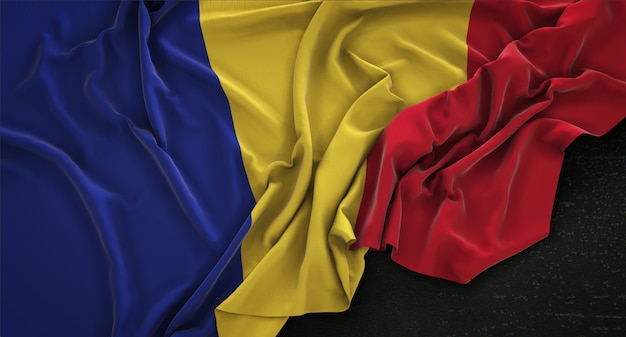

Romania is home to one of the most well-preserved medieval towns in Europe, Brasov.
The Carpathian Mountains in Romania are home to the largest population of brown bears in Europe.
Romania is the birthplace of the famous vampire character, Count Dracula, inspired by the historical figure Vlad the Impaler.
The Palace of the Parliament in Bucharest is the largest administrative building in the world.
Romania has the second-largest underground glacier in the world, located in the Bihor Mountains.
Bucharest, the capital of Romania, is known as Little Paris due to its beautiful architecture.
Romania is home to the world’s most extensive underground network of caves, the Scarisoara Ice Cave.
The Danube Delta in Romania is the second-largest and best-preserved river delta in Europe.
Romania has one of the most diverse wildlife populations in Europe, including lynx, wolves, and golden eagles.
Transylvania, a region in Romania, is known for its stunning castles, including Bran Castle, often referred to as Dracula’s Castle.
Romania is the birthplace of gymnastics legend Nadia Comaneci, the first gymnast to score a perfect 10 in Olympic history.
The Merry Cemetery in Romania is a colorful cemetery known for its unique tombstones and cheerful depictions.
Romania has a strong tradition of folk art, including intricate wood carvings and traditional handwoven textiles.
The painted monasteries of Bukovina in Romania are UNESCO World Heritage Sites, known for their vibrant frescoes.
Romania is rich in natural hot springs, attracting visitors seeking relaxation and therapeutic benefits.
The Transfagarasan Road in Romania is considered one of the most beautiful and challenging driving routes in the world.
Romania has a rich culinary heritage, including delicious dishes like sarmale (stuffed cabbage rolls) and mici (grilled ground meat rolls).
The Danube River, which crosses through Romania, is the second-longest river in Europe.
Romania is home to the largest population of Roma people (or Gypsies) in Europe, contributing to the country’s cultural diversity.
The Apuseni Mountains in Romania are a haven for outdoor enthusiasts, offering opportunities for hiking, climbing, and cave exploration.
Romania has a vibrant traditional music scene, with instruments like the pan flute and cimbalom being widely used.
The Black Sea coastline in Romania is home to beautiful beaches and resorts, attracting tourists during the summer months.
Romania has a strong wine industry, producing notable varieties such as Feteasca Neagra and Tamaioasa Romaneasca.
Bran Castle, often associated with the Dracula legend, is one of Romania’s most popular tourist attractions.
Romania has a unique alphabet called the Romanian Cyrillic alphabet, which was used until the late 19th century.
The wooden churches of Maramures in Romania are UNESCO World Heritage Sites, known for their impressive architecture.
The traditional Romanian blouse, called the ie, is a symbol of national identity and craftsmanship.
Romania is home to Europe’s largest population of brown bears, with around 6,000 bears living in the country’s forests.
Romanian cuisine is heavily influenced by Ottoman, Hungarian, and German culinary traditions.
Romania is a treasure trove of thermal spas, offering rejuvenating experiences and wellness retreats.
Romania has a significant number of UNESCO World Heritage Sites, including the historic center of Sighisoara.
The Merry Cemetery in Sapanta, Romania, features uniquely decorated tombstones with stories and humorous epitaphs.
Romania has a strong tradition of producing exquisite handmade pottery, known for its intricate designs and vibrant colors.
The Peles Castle in Sinaia, Romania, is a stunning example of Neo-Renaissance architecture and is considered one of the most beautiful castles in Europe.
Romanian folklore is rich with mythical creatures such as strigoi (undead spirits) and iele (forest nymphs).
Romania has a thriving film industry, with notable directors like Cristian Mungiu gaining international recognition.
The Bucegi Mountains in Romania are famous for their unique rock formations, such as the Sphinx and the Babele.
Romania is the birthplace of the world-famous delicacy, mici (meaning small ones in Romanian), a type of grilled ground meat seasoned with garlic and spices.
The Turda Salt Mine in Romania is a fascinating underground attraction, turned into an amusement park with activities like mini-golf and boating.
Romanian traditional dance is characterized by intricate footwork and lively music, often performed during festivals and celebrations.
Romania is known for its picturesque landscapes, from the stunning Carpathian Mountains to the rolling hills of the Transylvanian countryside.
The Mud Volcanoes in Romania’s Buzau County are a unique natural phenomenon caused by the eruption of gases and minerals.
The traditional Romanian costume, known as the port popular, varies from region to region and is worn during special occasions and festivals.
Romania has a thriving literary scene, with authors like Mircea Cartarescu and Herta Muller receiving international recognition and awards.
Romania is home to the Bear Lake, a stunning natural reserve known for its crystal-clear water and unique geological formations.
Around the world, coffee enthusiasts enjoy Monin coffee concentrate since it is a multipurpose product. Conveniently combining…
The Importance of Choosing the Right Shower for Your Bathroom Renovating your bathroom can be…
Usain Bolt holds the record for the fastest 100-meter sprint in history.Bolt was named Sportsman…
Love is in the air... and it smells suspiciously like chocolate!Roses are red, violets are…
Life's a beach, take a picture and relax.Sun, sand, and salty kisses. That's what beach…
Hungary is home to the largest thermal water cave system in the world.The Rubik's Cube…